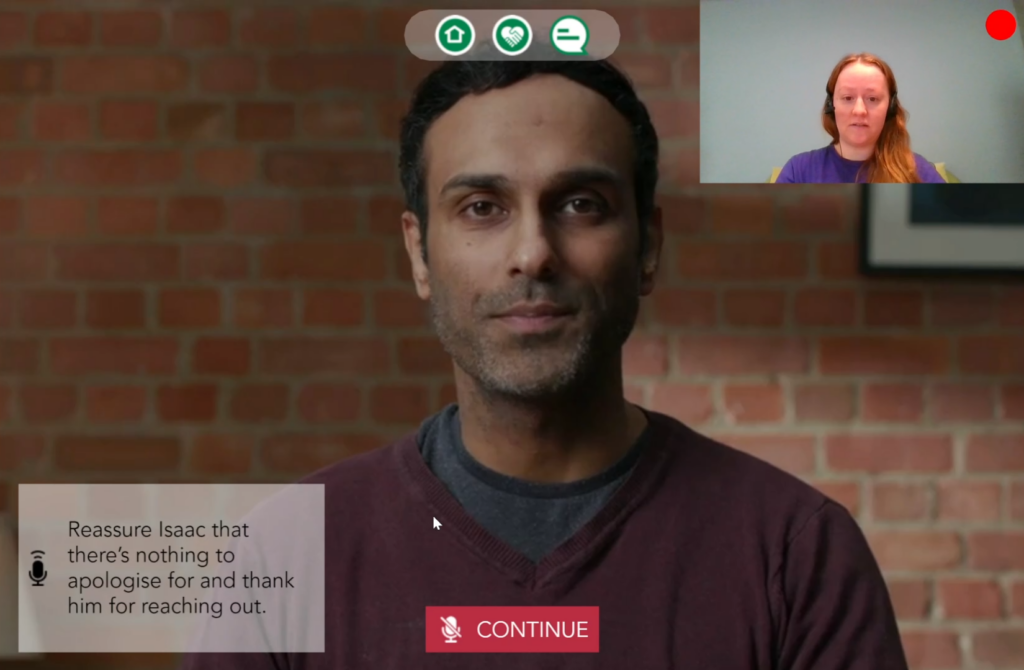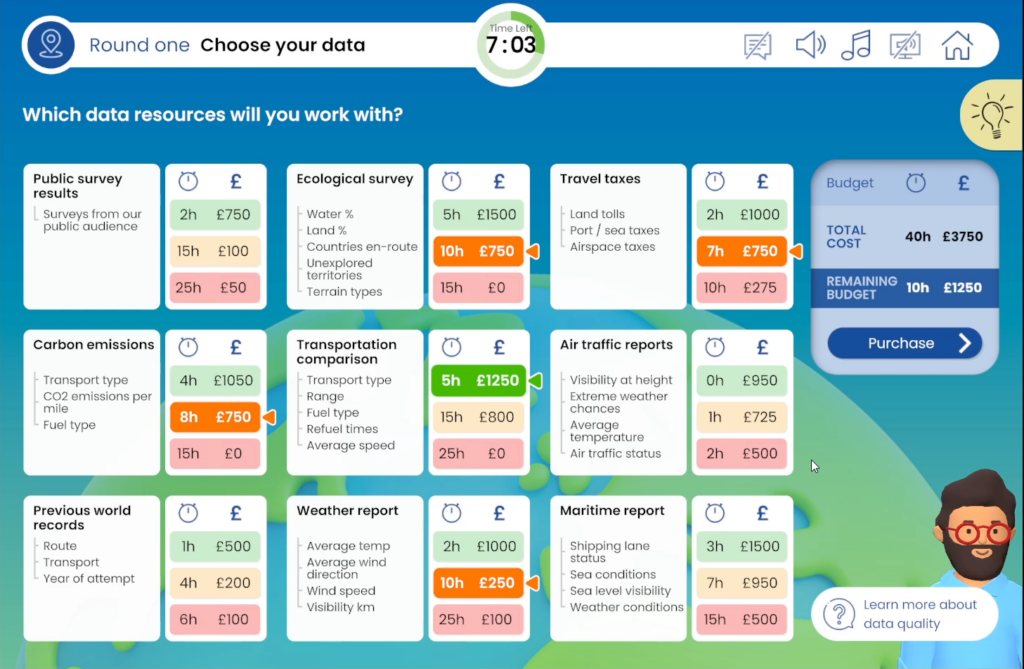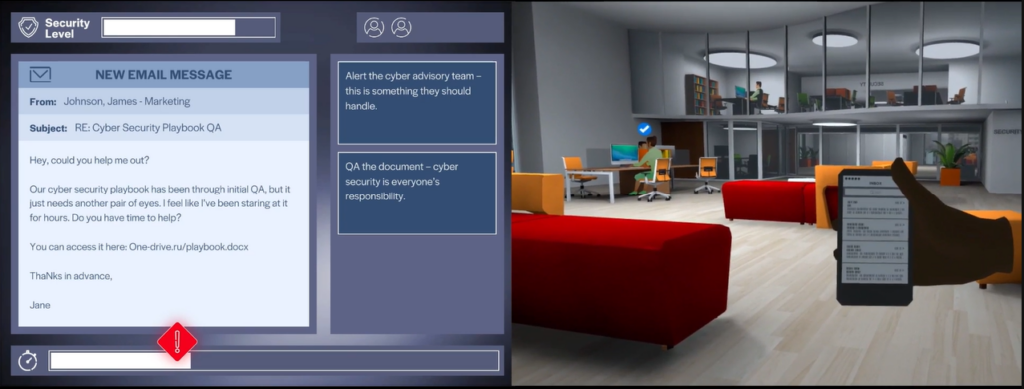Learning Live 2024 took place in September, where leaders in learning and development get together to discuss their challenges and get practical solutions to use in their workplaces. This year, those five top challenges were…
The event may have come and gone but we’ve collated our thoughts on how leaders can tackle those challenges below…
AI integration remains a persistent challenge. Much of what we’ve seen in learning & development is still on generative AI and creating content – but do our learners really need more content to wade through?
As Dr Markus Bernhardt elegantly put it at a talk this year: experience, rather than content, is now king. And we couldn’t agree more!
That’s why our focus has been on using AI to create practice tools, not more content. We’ve been experimenting with generating personalised insights for learners, in order to facilitate self-reflection and help them improve key skills. Early last year, we produced a proof-of-concept using this diagnostic AI technology. It allows learners to practise challenging conversation, from giving their manager bad news about a delayed project, to handling sensitive conversations with a patient.
We’ve really enjoyed refining this concept into real projects with some of our clients such as Kenes Group and London Business School (watch this space for more on that project).

While ROI and impact can be difficult to quantify, gathering good quality data that evidences change, is something we’re passionate about. As we enter awards season, we’ve all been reminded that impact data is our friend! But more importantly, we can’t learn from and improve the experiences we create in the future, if we don’t know the effect they’re having now.
When it comes to bespoke learning experiences, it’s especially important to set out what you’re trying to change, what you’ll test, and how you’re going to test it from the very beginning.
We’re such data nerds, we even had a full academic study completed on one project, Hear to Listen, with Lloyds Banking Group and Lynda Joy Gerry – a researcher in immersive technologies from the University of Auckland. This rigorous study compared a standard branching scenario with our interactive conversation simulation.
The result: learners were more than twice as likely to change their behaviour after completing our conversation simulation.
We’re super proud of that project and the effort we put in with LBG to show how this kind of active learning can deliver big impact. And we’re also proud to say it won a Gold Learning Technologies Award in 2022 for ‘Excellence in the design of learning content’.

Engagement comes from more than just the content itself – it’s how you present that content to create an experience that will help make the learning land and stick. This experience-first approach is how we design learning. When you create learning that facilitates meaningful practice, it becomes much more immersive and much easier to retain. In other words, it becomes more engaging!
It’s why one of our recent projects with London Stock Exchange Group has been so successful – it generated a 408% increase in positive sentiment. We worked with them on a mandatory module that had previously seen low levels of engagement. But by creating realistic scenarios that allowed learners to put theory into practice, we found learners were far more engaged and better able to understand their responsibilities.
By driving engagement, we can also start to tackle the issue of learners asking for shorter and shorter modules. Microlearning had a bit of a moment – but we’ve found that when you get the experience right, even a piece of learning that’s 40 minutes or longer can keep its audience engaged. We’ve created several games with Lloyds Banking Group all about data. Maybe not the most riveting topic, but when you get learners together working on a fictional proposal for a round the world trip, or on navigating a virtual escape room, data doesn’t seem so daunting.

Leadership development is a challenge that can be intensified by hybrid or remote working, where potential leaders might not get the mentorship contact that they need. They might miss out on the experiences that will help them develop into a leader. In short, the social aspect of being sat next to each other is missed.
While we can’t fully recreate that feeling, we can certainly try to replicate it. That’s where our social learning experiences come in. We’ve created several projects recently which bring groups of learners together, whether they’re a totally remote group or a hybrid group. The key here is that many of these groups are mixed-level and mixed-seniority. This gives everyone a chance to benefit from different perspectives and knowledge.
It can be tricky to bring these groups together, especially depending on IT restrictions. But if you can get it right, there’s so much value to be had when people can learn from each other. (You can read a bit more about that in our social learning blog.)

Equity, diversity, inclusion. A big topic and a big challenge – and one we’re passionate about. We’ve created everything from VR solutions that allow you to embody a marginalised employee and see the world through their eyes, to a suite of story-led eLearning modules designed for a global audience.
The solutions we create can all look very different, depending on the learning need. But everything we create in the DE&I space is trying to do the same thing: build a culture of respect by humanising groups and individuals who are too often marginalised, overlooked or reduced down to their protected characteristic.
We also see improving the accessibility of our training as a crucial part of helping companies create a more inclusive culture. After all, what’s the point in creating learning that’s about diversity, equity and inclusion, if it’s not accessible for everyone?
Recently, we were lucky enough to work with Lloyds Banking Group on their disability and neuro-inclusion training. The result was that we completed our most accessible app yet! It has a number of configurable options, including British Sign Language interpretation for all video content. We worked with accessible end-user groups throughout the design process, to try out solutions and keep us on the right track. It was an amazing learning opportunity for all involved.
We learn something on every project and we take every learning on to the next opportunity. So, if you’ve got a learning challenge, whether it fits in the five above or not, get in touch so we can apply everything we’ve learned to your project.
We’re always happy to talk to you about how immersive technologies can engage your employees and customers. If you have a learning objective in mind, or simply want to know more about emerging technologies like VR, AR, or AI, send us a message and we’ll get back to you as soon as we can.